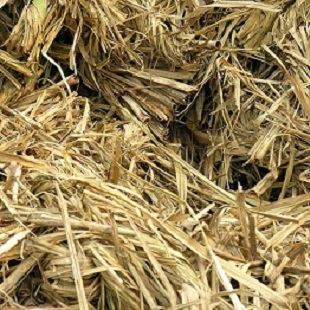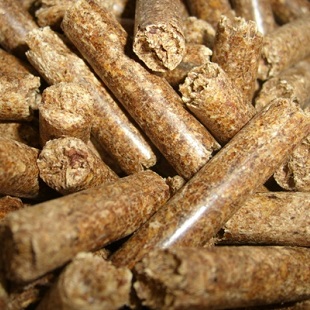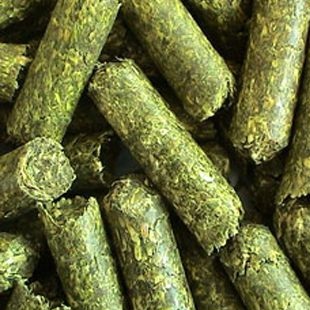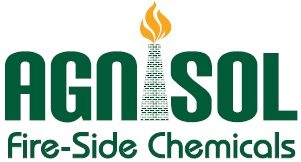
What Is Fire Side Additive?
The primary aim of combustion is to obtain the maximum amount of steam from each unit of fuel. However, impurities in fuels and operational problems are limitations to achieving maximum output from burned fuel. The impurities in coal can lead to the formation of slag in the boiler furnace, can leave the clinkers on the fuel bed and the presence of Sulphur can lead to cold end corrosion. It is possible to improve the combustion of fuel and reduce un-burnt carbon in the ash. A fireside additive plays an important role in the complete combustion of fuel along with a control on corrosion deposits, slagging clinker formation, reduction in airborne pollution emission as well as inhibition of fouling.
Our Multipurpose Solid Fuel Additive is a free-flowing powder, designed primarily for treating coal, wood, and other solid fuels. It acts as a combustion catalyst and thereby loss due to unburnt fuel gets minimized, resulting in improved combustion efficiency. It has an anti–fouling agent that helps to keep heat transfer surfaces clean and thus improves the steam generation for the same heat transfer area. Hard clinker is softened and the tendency of hard clinker formation is reduced, thereby helping in reducing boiler maintenance, while providing easy cleaning and also increasing the boiler availability for long-term operation. This results in smoke-free combustion at lower excess air levels and improved fuel economy.
What is the Process of Combustion?

Reaction
- Complete Combustion : C + 02 → CO2 (Carbon Dioxide)
- Incomplete Combustion : C + 02→ CO (Carbon Monoxide) + C (Unburned Carbon)
- Corrosion due to Sulphur Contents: S + O2 → SO2 →SO3 + Moisture (H2O) → H2SO4
- Mineral Salt Impurities produce Slag: Forms Oxide
- Clinker due to Silica Impurities: Forms Silicates
What are the Problems in the Combustion Process?

- Incomplete Combustion
Fuel burns in the presence of oxygen to form Carbon Dioxide but a part of this fuel forms Carbon Monoxide and some remains as Unburned Carbon.
- Slag Formation
During the combustion process as the temperature rises molten fly ash particles adhere to relatively cool furnace walls, steam generating tubes, and form a hard shiny layer known as slag.
- Clinker Formation
The Unburned carbon rises the chamber and gets entrapped in molten slag to form a hard deposit called clinker.
- Corrosion
Oxides of Alkalines like Sodium, Potassium, Iron, and Aluminum form sulfate with SO3 present in flue gas. These are very corrosive at high temp on metal surfaces.
- Cold End Corrosion
When Moisture from Fuel (H2O) reacts with SO3 flue gas in the chamber it forms H2SO4. This gets condensed in the Air Pre-Heater, Economizer, and Stacks to cause heavy blockages as it traps large quantities of fly ash.
- Acid Smut Formation
This is a result of sulfuric acid coated with soot and fly ash particles being emitted from the stack.
All the above problems lead to an increase in the consumption of fuel, reduced efficiency of the furnace, and a rise in pollution levels.
COAL – SOLID FUEL ANALYSIS

Coal is one of the primary sources of energy, accounting for about 67% of the total energy consumption in the country. India has some of the largest reserves of coal in the world. Indian coal has high ash content and low calorific value. A typical Coal constitutes following contents.
- Moisture: 7 – 14 %
- Ash: 12 to 20 %
- Volatile Matter: 25 to 35 %
- Calorific Value: 3300 to 4500 Kcal
BAGASSE – SOLID FUEL ANALYSIS

Bagasse has historically been used as a fuel in the sugar industry, and although its calorific value is relatively low compared with traditional fossil fuels, there is no doubt that it constitutes a valuable energy source, especially for countries that don’t have significant availability of fuels and that are major sugar producers. Sugar cane Bagasse constitutes the fibrous matter that remains after sugarcane stalks are crushed to extract their juice. From the chemical point of view, it is composed of:
- Volatile Matter: 45%–55%
- Ash: 1%–4%
- Moisture: 45%–55%
- Calorific Value: 2000 to 2500 Kcal
WOOD – SOLID FUEL ANALYSIS

Burning of wood waste in boilers is mostly confined to those industries to obtain heat energy and to alleviate possible solid waste disposal problems. In boilers, wood waste is normally burned in the form of hogged wood, bark, sawdust, shavings, chips, mill rejects, sander dust, wood trim, pellets, or briquettes. Usually, wood, bark, or a mixture of wood and bark waste is burned most frequently in the pulp mills, lumber, furniture, and plywood industries. From the chemical point of view, there is a wide variation in the properties of various woods and it is composed of:
- Volatile Matter: 25%–40%
- Ash: 1%–2%
- Moisture (Wood): 40%–65%
- Calorific Value: 2000 to 2500 Kcal
BIOMASS – SOLID FUEL ANALYSIS

Biomass is used as fuel in boilers in the form of pellets and briquettes developed from organic materials such as scrap lumber, forest debris, certain crop waste, manure, and some other organic waste residue. With a constant supply of waste from construction and demolition activities, wood not used in papermaking, and municipal solid waste this renewable and sustainable source of energy production can continue indefinitely. The chemical properties of typical biomass fuel are composed of:
- Volatile Matter: 25%–40%
- Ash: 1%–2%
- Moisture: 5%–7%
- Calorific Value: 2000 to 2500 Kcal
Why Use Additives with Solid Fuel?
- During the burning process our additive acts as a combustion catalyst by producing nascent oxygen, which boosts the combustion of carbon which reduces the formation of Carbon monoxide and Unburned Carbon.
- Almost all Fuels have ash melting points in the range of 9000C to 16000C, thus impurities burn with carbon to form slag and clinker. Our additive reacts with impurities like magnesium and aluminate compounds to form a spinal compound which is very easy to remove powdery deposits and has a melting point of more than 38000 Raising the melting temperature of major impurities in the furnace inhibits the fouling of the furnace.
- Our multipurpose fireside additive reacts with acids like H2SO4 and acts as a neutralizing agent to reduce the corrosion caused by acids in the chamber.
- Our Additive does not allow the impurities that melt and form slag or clinker to sinter onto the Furnace, making the cleaning process easy.
- Our additives also help in reducing the existing surface slag or clinker formed on the walls over years of use of the furnace.
What are the Advantages of Using Fire Side Additives?
- Complete Combustion of Fuel
- Reduced Slag & Clinker Formation
- Minimizes Corrosion & Cold Corrosion
- Reduces Acid Smut Formation
- Decrease in Unburned Carbon in Ash
- Reduces Fuel Consumption
- Increase in Furnace Efficiency
- Decreases Particulate Matter from Stack
- Forms Reflective Coating on Furnace Wall
- Decreases the Radiant Energy Absorption
Parameters to be Monitored for Additive Performance
| Parameters | Without Additive | Using Additive |
| Carbon Dioxide | Decreases | Increases |
| Unburned Carbon in Ash | Increases | Decreases |
| Furnace Temperature | Decreases | Increases |
| Particulate Matter from Stack | Increases | Decreases |
| Stack Temperature | Increases | Decreases |
| Slag & Clinker Deposits | Increases | Decreases |
Our Range of Products
SOLID FUEL ADDITIVE
Our Solid Fuel Additive is a free-flowing powder treatment designed primarily for treating coal, wood, bagasse, and other organic solid fuels. It acts as a combustion catalyst and thereby loss due to unburnt fuel gets minimized resulting in improved combustion efficiency. It has an anti–fouling agent that helps to keep heat transfer surfaces clean and thus improves the steam generation for the same heat transfer area. It softens the hard clinker and reduces the tendency of hard clinker formation, thus helping in reducing boiler maintenance, providing ease in cleaning, and increasing the boiler availability for long-term operation. It promotes smoke-free combustion at lower excess air levels, resulting in improved fuel economy.
| Sr | Product Code | Product Description | Standard Packing |
| 1 | AGN – 6100 (P*) | Coal Fuel Additive | 25 Kg / 50 Kg |
| 2 | AGN – 6200 (P*) | Bagasse Fuel Additive | 25 Kg / 50 Kg |
| 3 | AGN – 6300 (P*) | Wood Fuel Additive | 25 Kg / 50 Kg |
| 4 | AGN – 6400 (P*) | Biomass Fuel Additive | 25 Kg / 50 Kg |
FURNACE POST-TREATMENT COMPOUND
Our Furnace Post Treatment compound is a perfect blend of combustion aid chemicals in the form of pouches for fire-side cleaning of the furnace. It also comprises combustion catalysts, oxidizing chemicals, dispersants, and corrosion inhibitors. When it enters the furnace it vaporizes to form a thin film on the furnace wall to complete the combustion of unburnt carbon and remove all the deposits from the heat transfer surface. It is available in small packets to simplify the dosing process for a boiler. The cleaning of the furnace wall improves the heat transfer and boiler efficiency with minimum breakdown.
| Sr | Product Code | Product Description |
| 1 | AGN ‐ 6000 (P*) | For Furnace Cleaning |
Dosage
Start with an initial dosage of 1 kg of additive for 1 ton of coal. After a week dosage should be adjusted according to the performance of the additive. If smoke persists, increase by 0.5 kg per ton of coal for another week. If smoking stops, decrease by 0.5 kg per ton of coal. To get the best performance of the additive, a regular dosage of the additive with the addition of coal is to be maintained between 200 Gms/Ton – 500 Gms/Ton.
Packing
Standard Packing: 25 KG / 50 KG
Method for Application
Method A (For Automized charging of Fuel)
Add the fireside additive by homogenous mixing it with Solid Fuel before the combustion by using a screw feeder along with the automized Fuel charging apparatus.
Method B (For Manual charging of Fuel)
Add the fireside additive by manually charging through the Fire Door / Inspection Door Point in the furnace. For best results ensure the additive spreads over the maximum area of the solid fuel and covers the complete furnace.
Following precautions should be taken during manual charging of fireside additive
- Keep the Damper opening at a minimum level during application.
- Use soot soot-blowing facility after chemical application.
- If Force Draft is experienced put off the fan during dosing of chemical.
Our Research and development is an ongoing process for innovating new treatment techniques aimed towards complete satisfaction to the client. Our Industrial Chemicals are formulated with discretion and caution to make their properties as environment-friendly as possible. Our dedicated workforce is imbibed with the same passion for a humane approach and our highly advanced infrastructural set-up helps us in our mission to deliver high-quality products.
